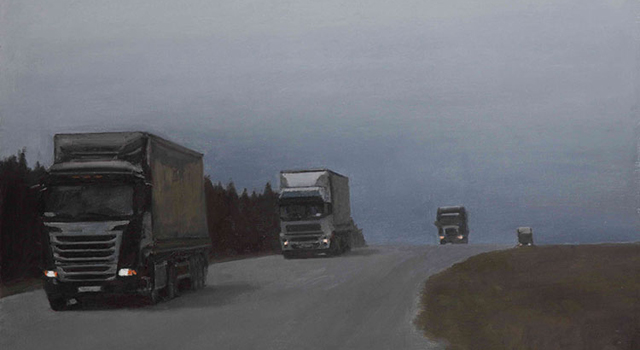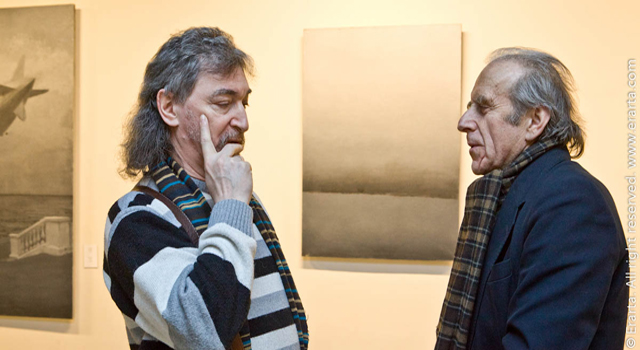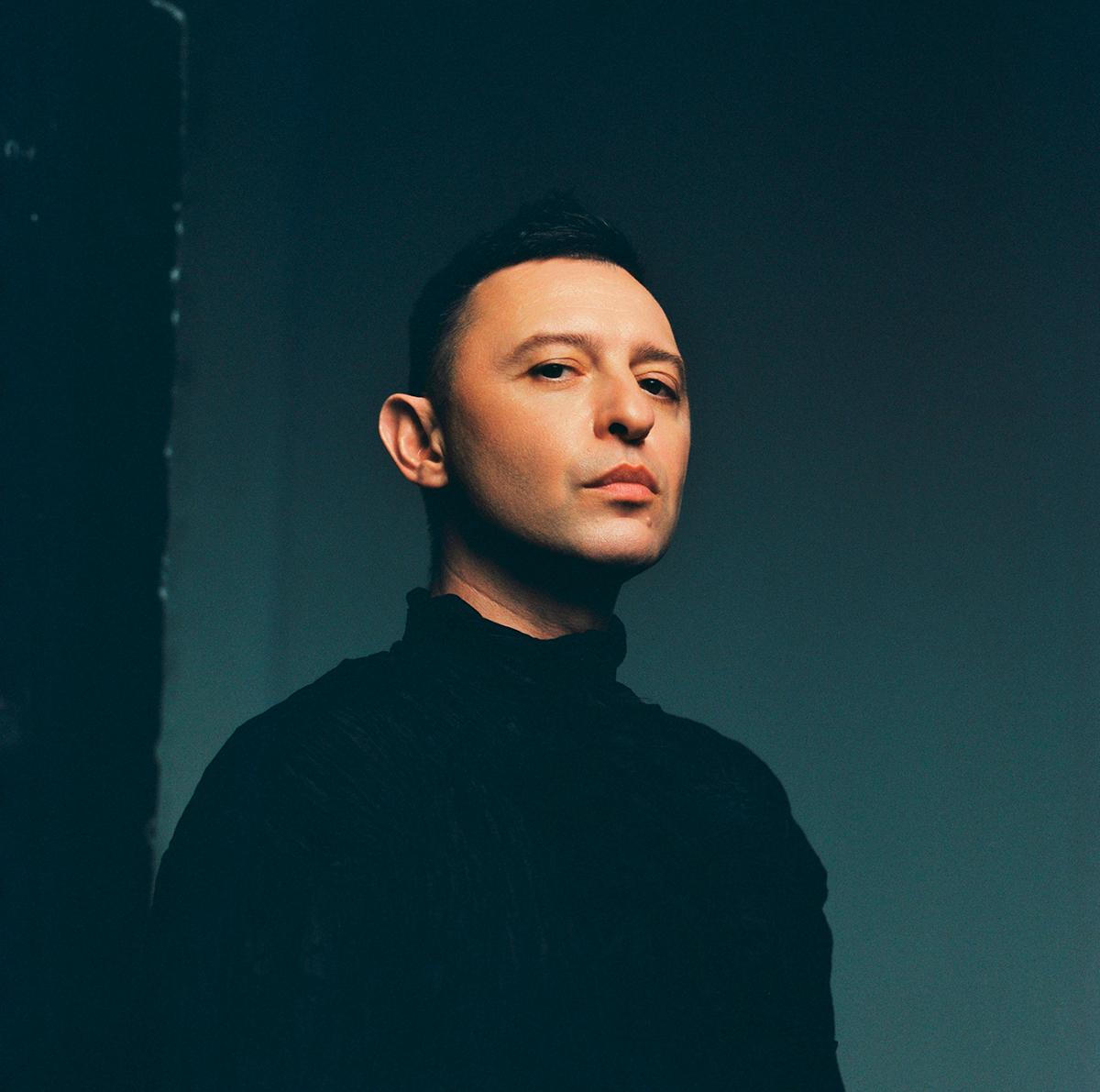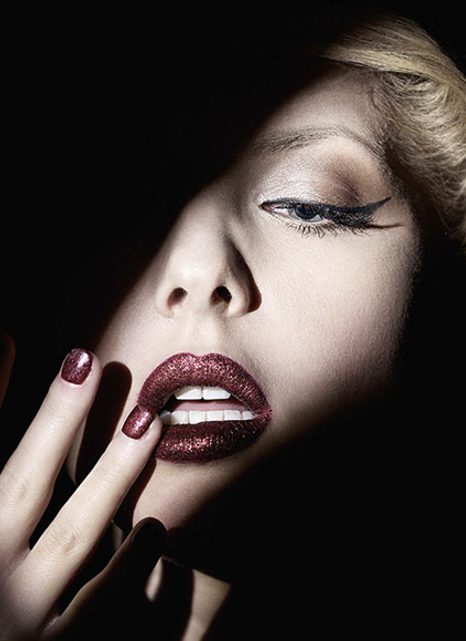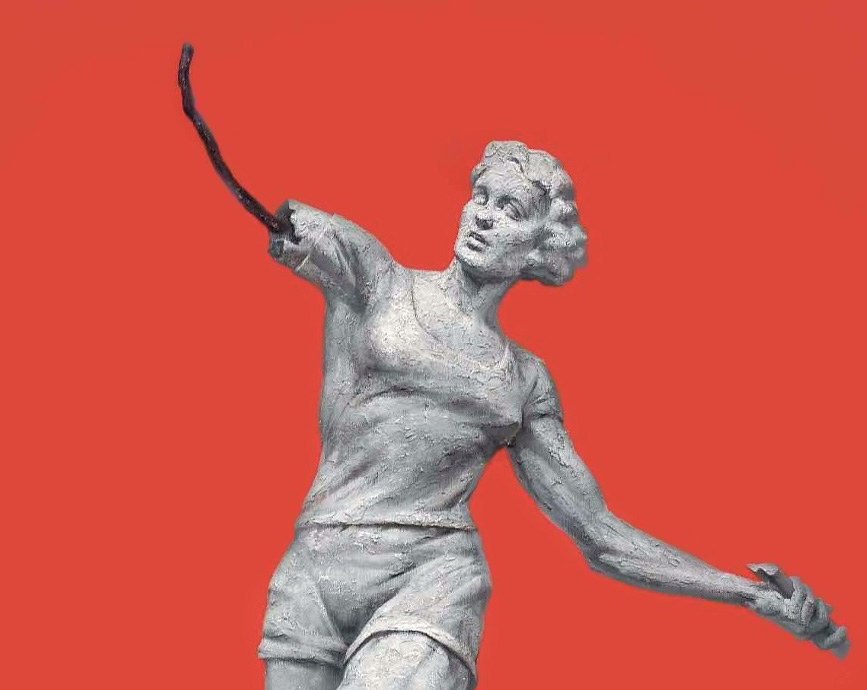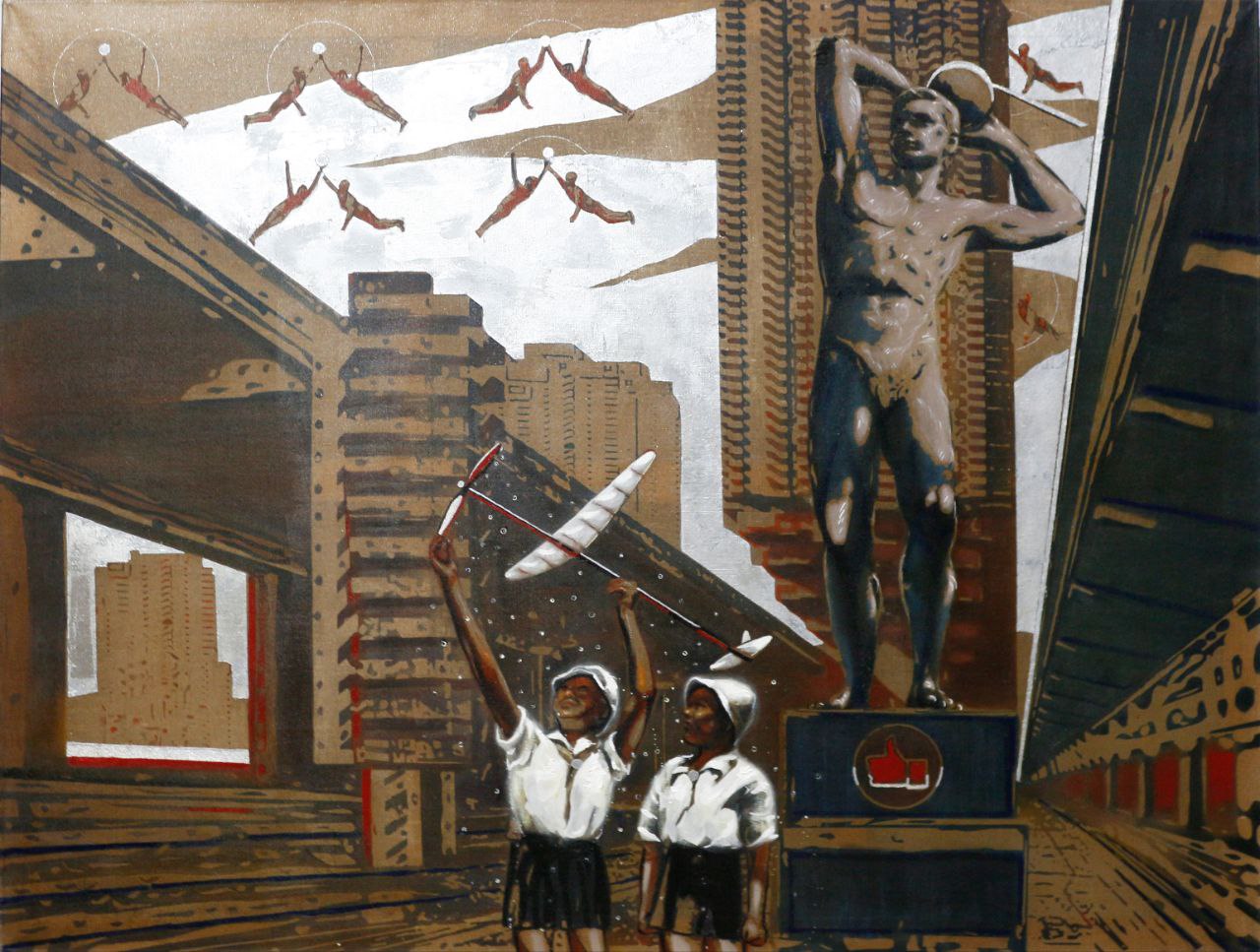The time concept is a key one in Kayotkin’s oeuvre. His canvases provoke some sort of visual meditation due to their idiosyncratic style, atmosphere and technique
Maksim Kayotkin is notable for his prolific creative activity. He regularly participates in various group — and solo — exhibitions locally and abroad and a large part of his artworks is in private and museum collections. In 2003 the artist was offered a headmaster position at Ural branch of Russian Academy of Painting, Sculpture and Architecture. One can only marvel at how Maksim manages to do painting in between his many other activities (including participation at charity auctions and organisation of exhibitions) and his responsibilities at the Academy.
The time concept is a key one in Kayotkin’s oeuvre. His canvases provoke some sort of visual meditation due to their idiosyncratic style, atmosphere and technique. Picturesque Perm’s nature looks grand and monochromatic in his canvases. At the first sight, there is nothing to get hold of visually. Lacking the focus — point and narrative element, the paintings make the viewer’s eyes “wander around” their surface.
Meditative aspect of the artist’s works is reflected not only in colouristic solution but also in their very format which emphasises the feeling of being enveloped by the depicted spaciousness. Their size turns the canvases into metaphorical windows opening up in a different reality. Generally speaking, all paintings c an be interpreted in this way, although in Kayotkin’s case this comparison is especially successful. One can imagine looking out of a wooden cottage - house somewhere on the lake shore. Vague and unclear horizon, dark surface of water and indistinct outlines of a faraway island evoke the feeling of melancholia and provoke self-reflection.
Despite the apparent dissimilarities, Maksim’s landscapes and industrial still — lives share many similarities. Both have human — nature — time triad as their subject — matter and both explore the causative relations between them. There are no human beings present in any of the paintings although their invisible presence is quite palpable. Such technique of exclusion turns what seem to be the object portraits in technogenic vanitas which were designed to advise that human existence is finite and everything is perishable. Seeming abandonment and irrelevance of technology is suggestive of humans returning to nature. Nevertheless, it would be a mistake to think that such depiction of technological achievements reflects the artist’s critical position. Kayotkin lovingly paints the portraits of objects as if they were alive which shows his aesthetic and intellectual admiration for the technological progress.
Kayotkin’s contemplative landscapes glorify the time stopped and celebrate the unbounded spaciousness of nature. His works depict Time in an unusual role of contemplation object. It feels like someone pressed the “stop” button and everything halted. There is no wind, no sound, and no smell. His industrial — scapes, on the other hand, show the Time in its destructive action. However, the artist also shows that Time is a reliable Healer which inevitably brings resignation and peace of mind.
Instead of developing the theme of the road, the depicted trains emphasise the effect of the frozen Time and present the concept of non - movement as a positive one. The rhythm of modern time implies an idea of constant motion and continual action. Following this tendency, our lives are sweeping past similar to blurry landscape behind the locomotive’s windows. We do not notice curious details and small episodes which constitute the beauty of life and divinity of our existence. Maksim Kayoutkin’s works clearly show that a stop is not necessarily the end of a journey but a well — deserved break after long and exhausting marathon. It is also the time to inhale deeply and ponder upon what is import in one’s life. It is also the time to turn around, close one’s eyes and listen to the silence.

